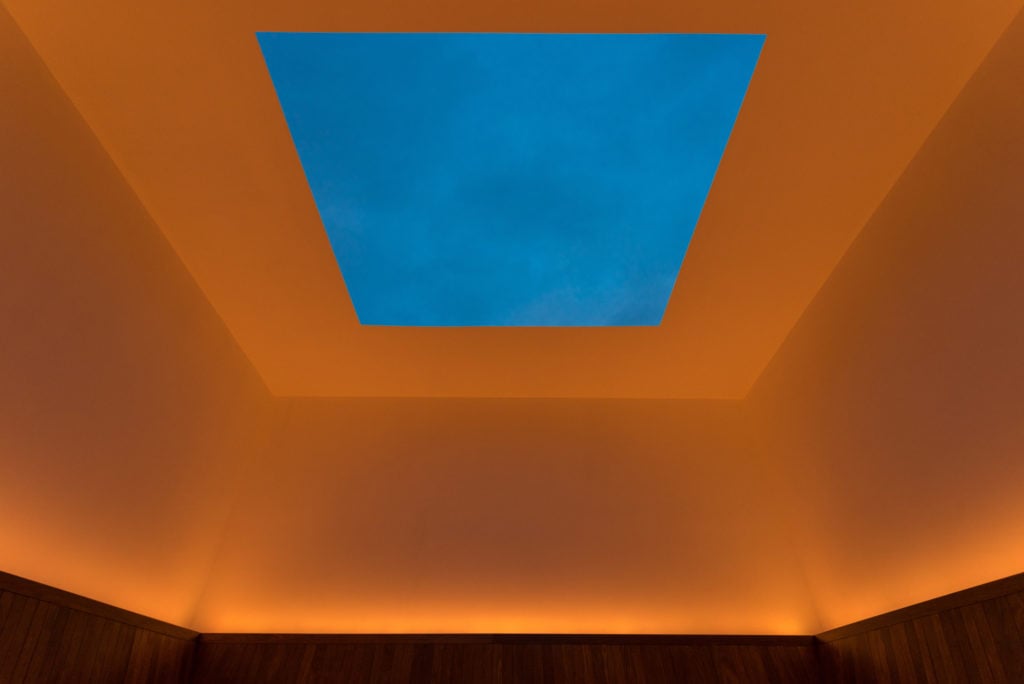Art World
A New Luxury Condo Is Invading the View Through James Turrell’s ‘Skyspace’ at MoMA PS1—So He Decided to Close It
The work will go back on view when the construction is complete.

The work will go back on view when the construction is complete.

Henri Neuendorf

James Turrell has closed his beloved Skyspace installation at MoMA PS1 after a nearby construction site protruded into view of the artwork. According to Gothamist, Turrell asked that the installation be closed until the scaffolding is taken down.
The work in question, titled Meeting, which is a permanent installation, requires an unobstructed view of the sky. The work features a rectangular opening in the ceiling to reveal the space above, along with undulating LED lighting that changes in accordance with the movement of the sun.
But now that the work cannot be viewed in its ideal conditions, the artist has decided to shut it down.
“James Turrell’s Meeting at MoMA PS1 will remain closed until construction scaffolding is no longer visible from the work,” a spokeswoman for MoMA PS1 told artnet News in an email. “The completed building will not be visible from the installation. We will re-open the work as soon as possible once the temporary construction scaffolding is no longer visible.”
The construction obstructing Turrell’s work comes from a site across the street from the museum at 22-44 Jackson Avenue in Queens, where two residential towers are being built to replace the former 5Pointz graffiti mural space.
Citing developer Jerry Wolkoff, Gothamist reported that the ongoing building work is estimated to be completed in six months. Meeting was first installed in 1980.
According to ArtInfo, this isn’t the first time Turrell has shut down one of his Skyspaces because of nearby construction. In 2012, the Nasher Sculpture Center in Dallas was forced to close its version of the work because the reflection from a glass-covered luxury condominium development compromised the art on view at the museum—including Turrell’s work. The artist was forced to reconstruct the installation in a different part of the museum to avoid the powerful glare from the building.